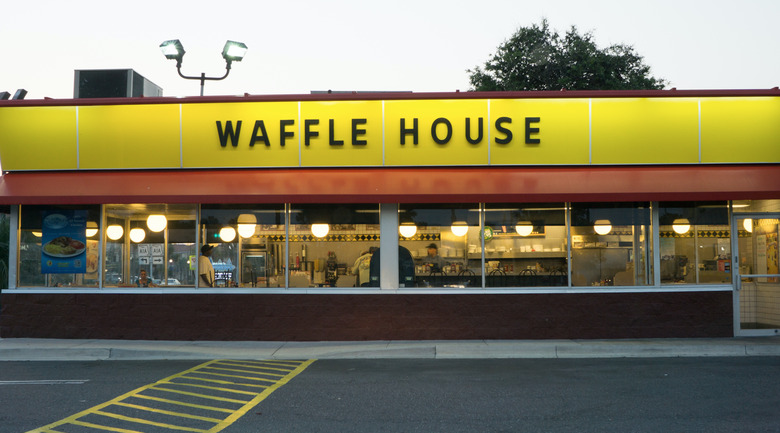Why Are So Many Crimes Committed At Waffle Houses?
Every week, it seems like we hear reports of a crime being committed at a Waffle House. And it's true: A Nashville-area Waffle House saw a mass shooting over the weekend, and quick scan of Google News reveals a Lawrence, Indiana, Waffle House robbed four times in three months; a fatal shooting at a Waffle House in New Albany, Indiana; shots fired at a Waffle House near Charlotte; a Waffle House robbery in Camden, Delaware; a woman shot at a Waffle House in Oklahoma City; a woman who grabbed money from the register at a Hermitage, Tennesse, Waffle House; a beating at a Waffle House in North Little Rock, Arkansas; and the murder of a waitress at a Waffle House in Biloxi, Mississippi. And that's just the tip of the iceberg. So what gives? Why does Waffle House appear to be a hotbed of criminal activity?
There are a few factors at play here. One, there are many Waffle House locations in cities and neighborhoods that historically have high crime rates. Two, Waffle House is open 24 hours a day, and if anyone's ever been to an all-night diner at 3 a.m., you probably know that some unsavory characters can come out at night. Three, in many places, Waffle House is the only restaurant open around the clock, so it's bound to attract some misfits. It's also inexpensive and open to all.
"We're a melting pot, we're a meeting place, and we're here to serve the public," Joe Rogers Jr., Waffle House's chairman, told the New York Times.
It's also important to keep in mind that this is a problem that faces the entire 24-hour diner industry, not just Waffle Houses. "It's not that more of these stories happen at Waffle Houses," Kelly Thrasher, a spokesperson for the chain, told Minyanville. "It's just getting more attention when it happens at a Waffle House."
"Open around the clock, Waffle House provides a cross section of America at the same time it is a place people can rely on to meet and hang out at any time of day," criminologist and police sergeant Paul Grattan, Jr. told us. "The Waffle House is not just go-to for locals either, but is also a notorious beacon for truckers and travelers of all kinds. A transient population, with no investment in the area, combined with Waffle House's tendency to be something of a town square for many throughout the eastern half of the country, means a higher likelihood of misdeeds."
"Waffle Houses are located next to major highways, which makes getaways convenient, and they are open at odd hours, thus attracting people not necessarily tied to jobs," Leonard Sipes, a former Senior Specialist for Crime Prevention for the Department of Justice, added. "Their prices attract the young, and age is correlated to crime; younger people commit far more crime. The young are also disproportionately victims of crime."
"People with a history of violence (or predisposed to violence) can strike any location without warning," he added as a caveat, "thus correlations do not equal causation."
Fast-food restaurants and casual sit-down chains are no strangers to crime, of course. It seems like every week we learn about a violent event of some sort at a chain (like an IHOP waiter using martial arts to fight off a robber), but major incidents like this shooting are still very rare. Infamous fast-food related crimes from the past include Paul Dennis Reid killing three employees of a Nashville McDonald's in 1997, James Oliver Huberty killing 21 and injuring 19 others in a California McDonald's in 1984, John Taylor killing five Wendy's workers in New York City in 2000, and Juan Luna and James Degorski killing seven employees of an Illinois Brown's Chicken in 1993.
We've reached out to Waffle House for comment and will update if we hear back. In the meantime, check out these fascinating facts about Waffle House.
